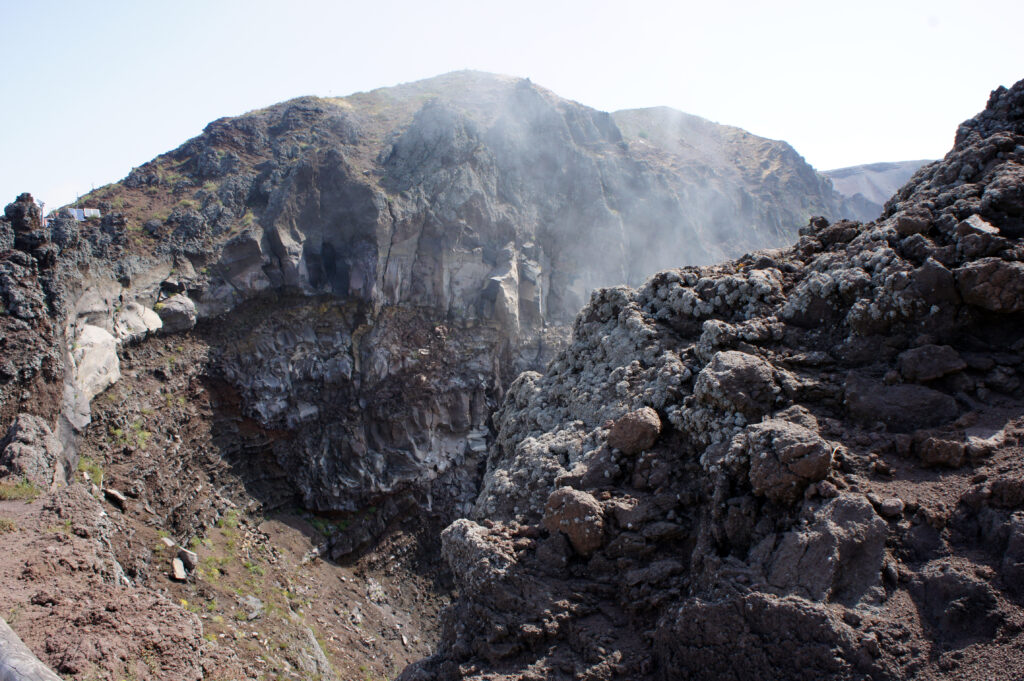✍️ This article was originally published on 30 September 2022, it was updated on 21 November 2024.
Pompeii
Buried in 79 AD during the eruption of Mount Vesuvius, much like Herculaneum, Pompeii has remained frozen in time like an image in a book.
Visiting Pompeii is like stepping back in time and immersing yourself in what a Roman city was like at that time. Alleys, columns, houses, frescoes… numerous remnants including the city’s amphitheater are almost intact, allowing you to vividly imagine Roman life and the ingenuity of the time when the city was built.
The streets are perfectly designed for chariot traffic; you can see many worn stones from repeated passage and distinct track marks. All the streets are paved with high sidewalks; initially, we wondered about these peculiar sidewalks. Thanks to our guidebook, we learned they were for water drainage, and those curious stone blocks placed here and there were actually pedestrian crossings to keep shoes clean! Ingenious!
The city is vast; plan for a full day and bring a good hat. There’s no shade, and it gets very hot in peak season. Also, bring your guidebook to fully appreciate the visit and better understand the different parts of the city.
The forum, theaters, amphitheater, and the Via dell’Abbondanza with its houses, shops, and workshops… this street remains the best-preserved in Pompeii. The amphitheater, almost in perfect condition, easily allows us to imagine the athletes and spectacles. Located outside the city, it could accommodate up to 20,000 spectators. It may not be the Colosseum, but its visit is more poignant due to the city’s history.
You will also discover entire rooms filled with jars, amphorae, sculptures… unearthed by archaeologists, as well as a room with plaster casts of buried bodies. I must admit, we didn’t linger over these somewhat macabre casts; the visit to the city itself was emotional enough.
There are no souvenir shops, but there’s an entire market at the foot of the city selling all sorts of trinkets at exorbitant prices!
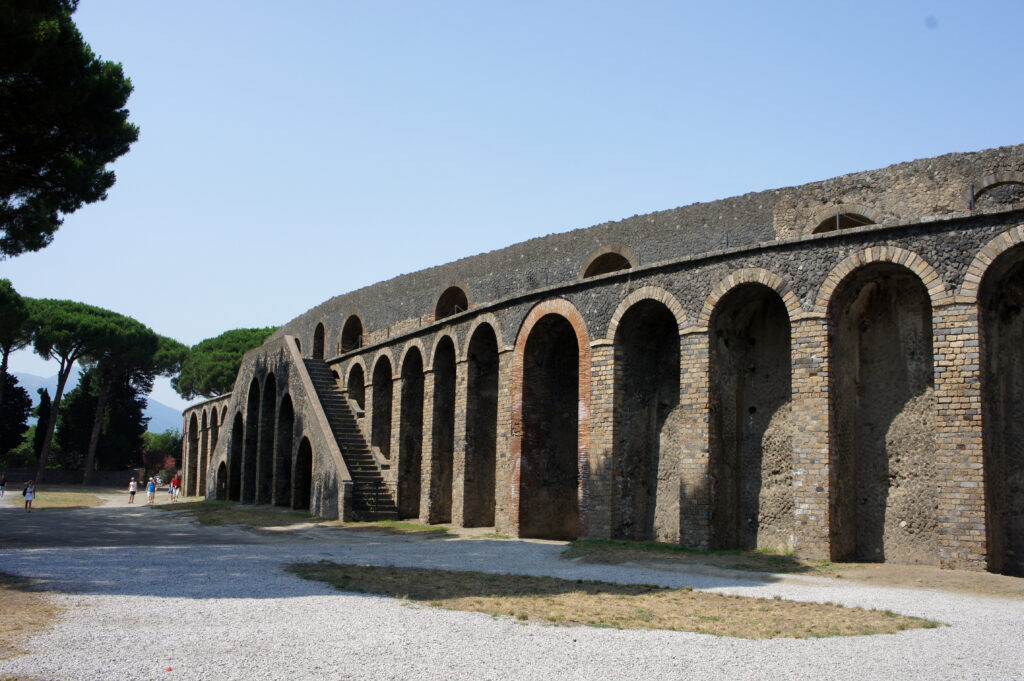
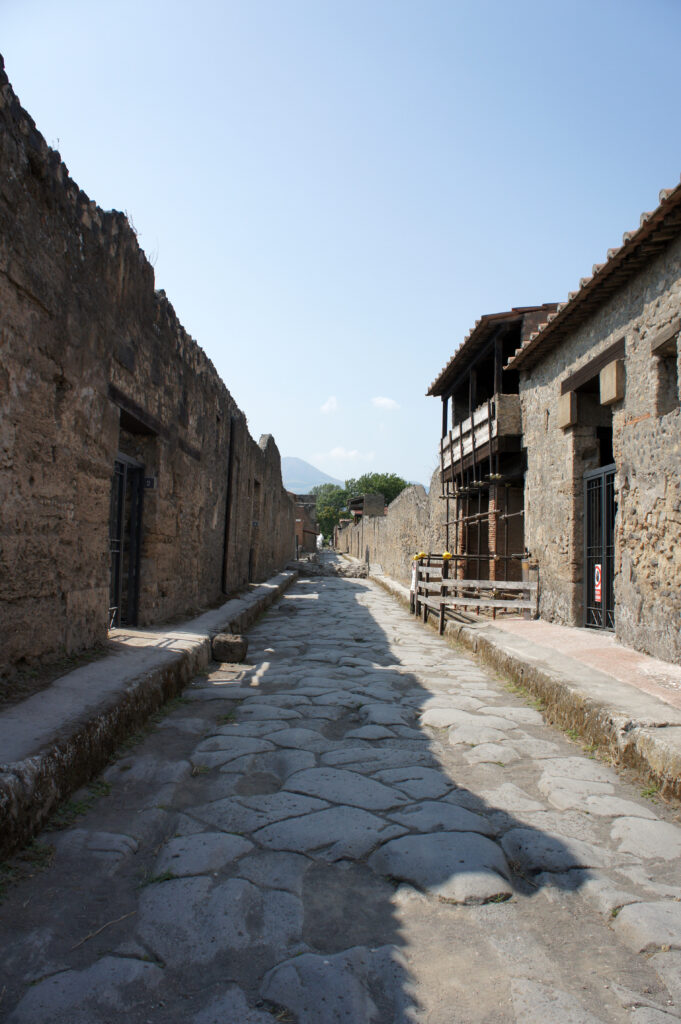


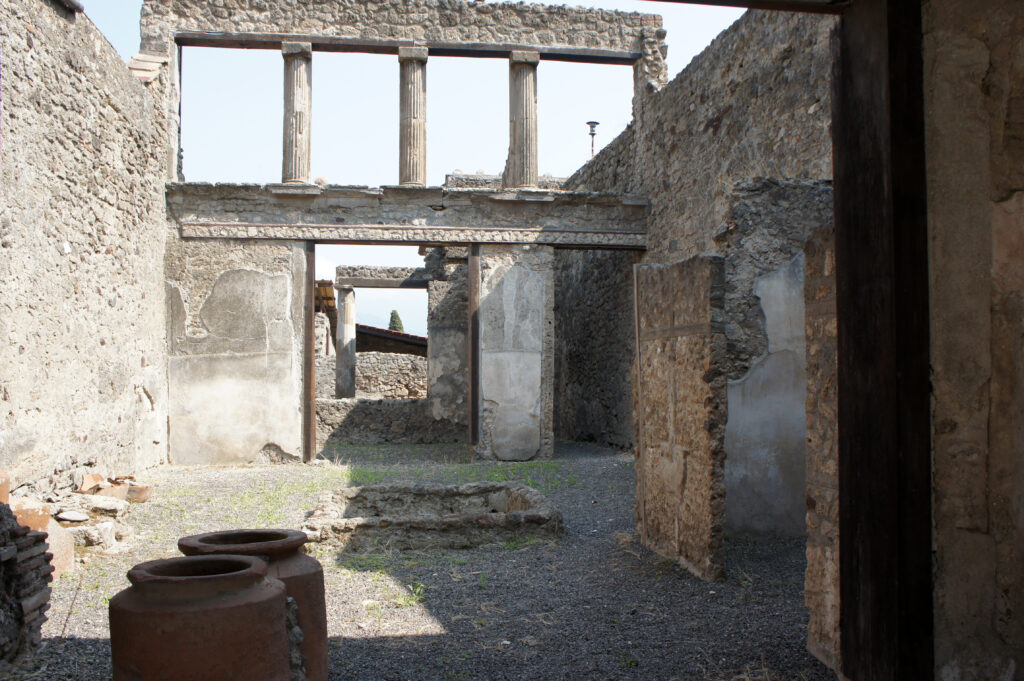

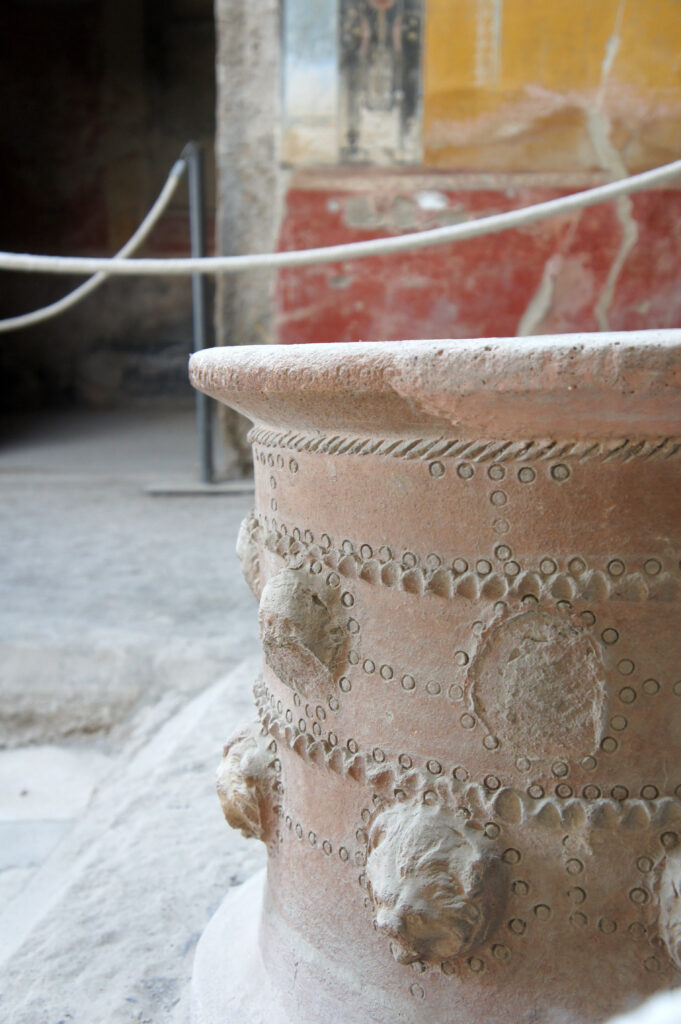



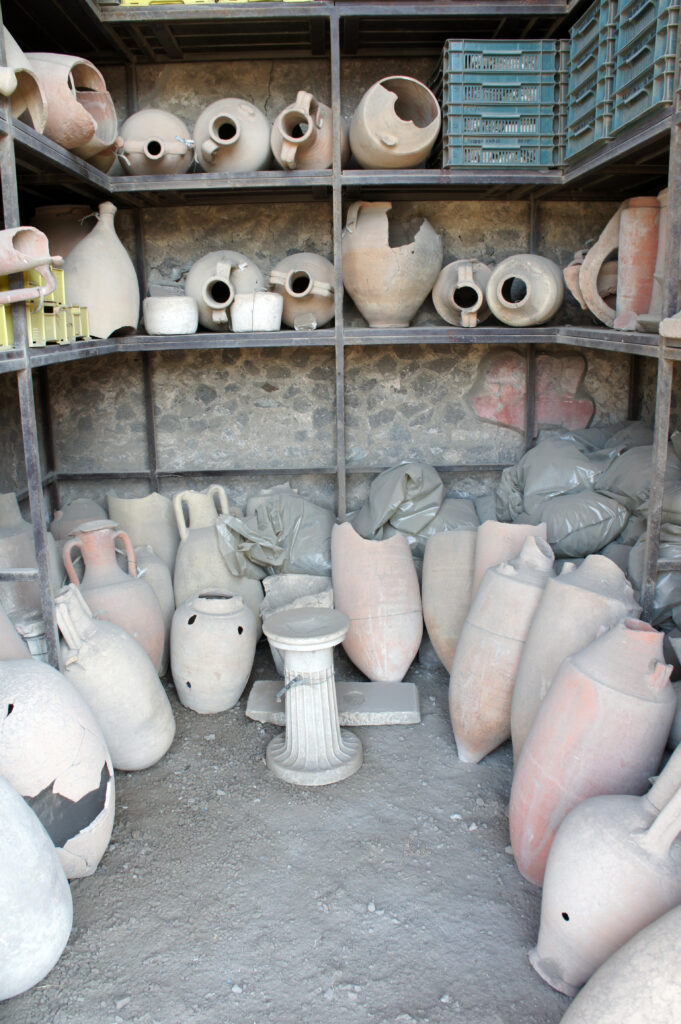

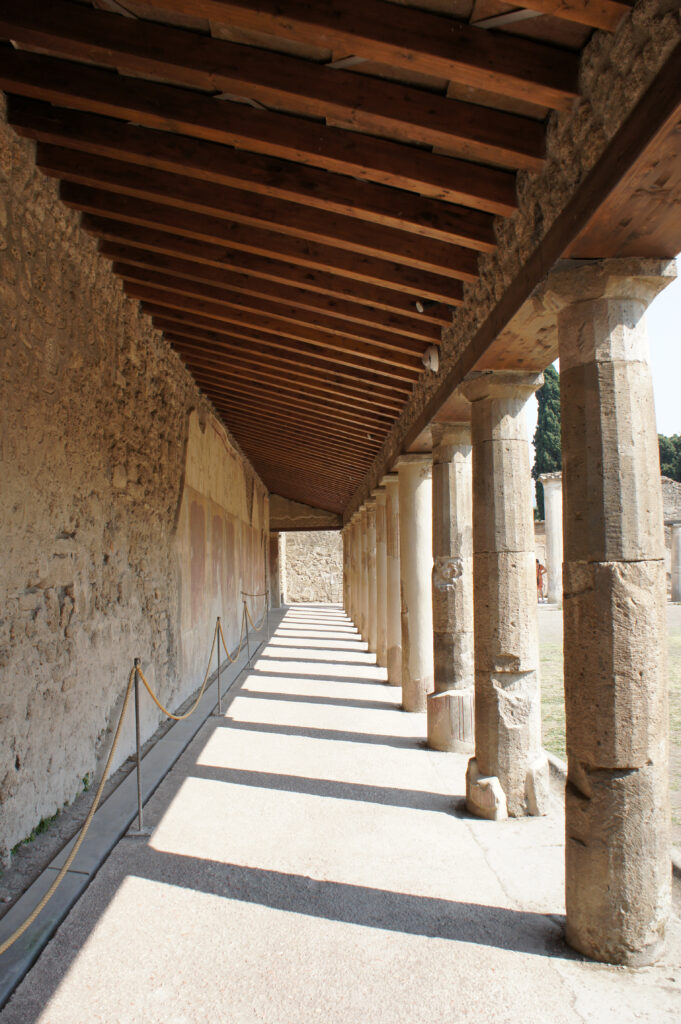
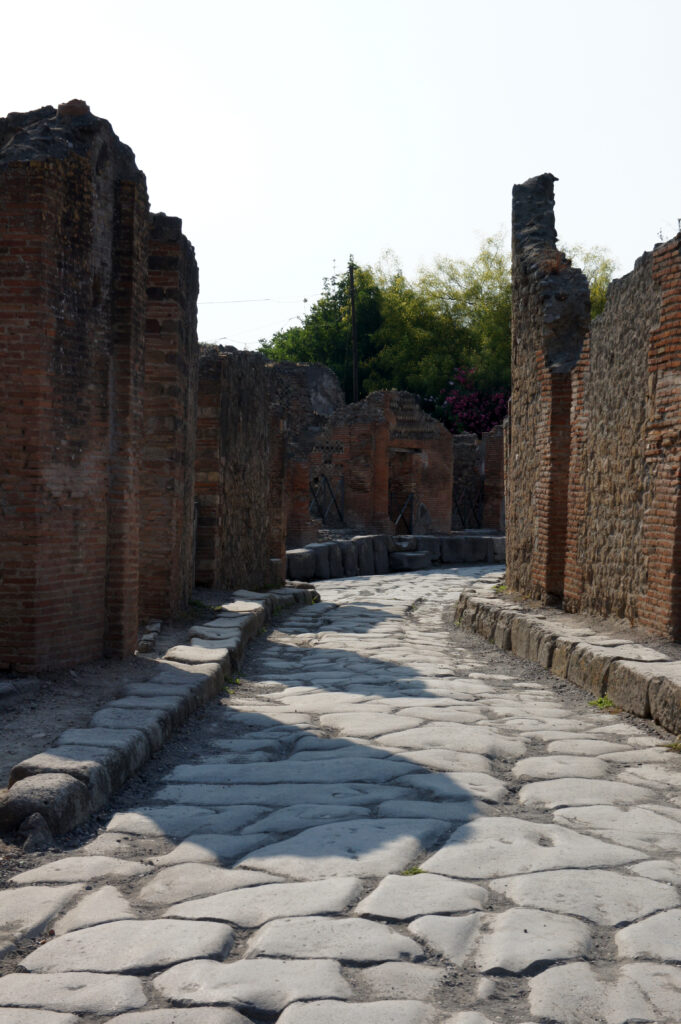
Vesuvius
It’s impossible to visit Pompeii without taking the hike up Mount Vesuvius. Access to the volcano and the hike itself are quite straightforward.
Mount Vesuvius is very touristy, perhaps even overly so. When you reach the crater, you’ll find souvenir shops, sometimes selling items made in China… it’s a shame as it detracts from the charm of the visit!
If you’re lucky, you might see some fumaroles emitting gases, which adds to the experience of complementing your historical visit to Pompeii.
